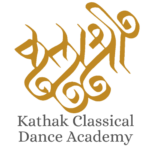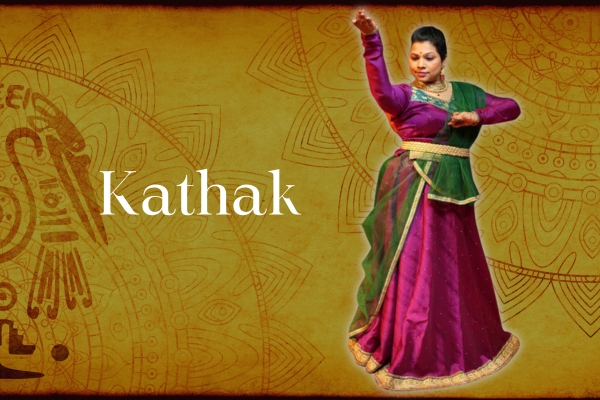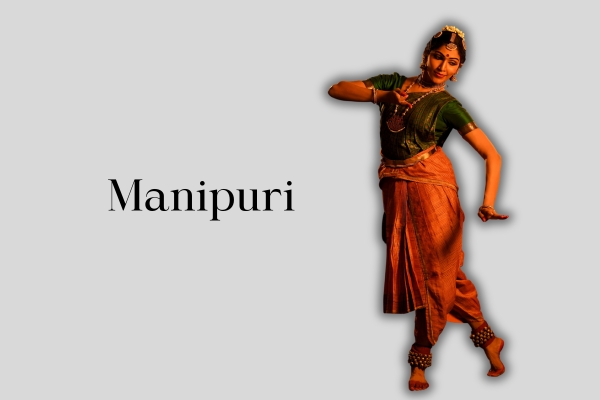India is known for its rich cultural heritage and traditions, which are reflected in its various art forms. One such art form that has captured the essence of India’s cultural diversity is classical dance. India is home to a myriad of classical dance forms, each with its unique style and storytelling aspect. In this article, we will delve into the world of Indian classical dance and explore the elegance and beauty behind unique dance forms that have mesmerised audiences for centuries.
Different Forms Of Indian Classical Dance
Kathak – Dancing to the Rhythms of North India
Kathak, a classical dance form from North India, is a stunning display of intricate footwork, lively storytelling, and rhythmic patterns. The name Kathak is derived from the Sanskrit word ‘Katha,’ which means story. This dance form originated in the temples of North India and has evolved over the centuries to incorporate elements of Persian and Islamic cultures.
Kathak is characterised by its fast spins (Chakkars), delicate footwork, and subtle expressions. The dancer’s feet rhythmically tap the ground, creating a hypnotic effect that transports the audience into a trance-like state. The dance form also incorporates miming and facial expressions to convey the emotions and story being enacted.
Kathak follows a unique structure called the ‘Gharana Of Kathak’ This system refers to the different styles of Kathak that have been developed in specific regions of North India. The Lucknow and Jaipur Gharanas are the most well-known styles, with distinct differences in technique, costume, and musical accompaniment.
The musical accompaniment for Kathak includes tabla, sarangi, and harmonium. The rhythms of the tala (beats) are essential to Kathak, and the dancer must have impeccable timing and coordination with the musicians.
Kathak is a celebration of North India’s cultural heritage and artistic traditions. It is a mesmerising performance that showcases the beauty and grace of Indian classical dance.
Bharatanatyam – Epitome of Grace and Expressiveness
Originating from the southern state of Tamil Nadu, Bharatanatyam is a classical dance form that embodies grace and expressiveness. This dance form involves intricate footwork, hand gestures, and facial expressions that narrate stories through movement. Bharatanatyam’s movements are known to be precise, rhythmic, and graceful, making it a delight to watch.
The dance form has a long-standing history and is considered to be one of the oldest classical dance forms in India. It has evolved through the ages and has remained a significant part of the rich cultural heritage of Tamil Nadu.
In Bharatanatyam, the dancer portrays various emotions, bringing the story to life through their movements. The hand gestures, known as mudras, have a specific meaning, making the storytelling even more profound. This dance form often focuses on Hindu mythology and religious themes, reflecting the cultural traditions of the region.
Bharatanatyam is a dance form that requires years of training and dedication to master. The intricate moves and expression require the dancer to have complete control over their body, making it a challenging yet rewarding experience. The use of simple yet elegant costumes, makeup, and jewellery adds to the beauty of the performance.
Odissi – The Sacred Dance of Orissa
Journey to the eastern state of Orissa and experience the spiritual essence of Odissi – a classical dance form that originated from ancient Hindu temples and was later revived in the mid-twentieth century. The dance is characterised by its fluid movements and sculpturesque poses that beautifully portray the stories from Indian scriptures and mythology.
The dance form dates back to the 2nd century BCE and was originally performed by female temple dancers called Maharis. The Maharis were believed to be married to Lord Jagannath and were considered sacred, and it was through their performances that the devotees communicated with the divine.
In the mid-twentieth century, the dance form faced a decline due to various factors. However, it was revived by a group of artists, led by Guru Kelucharan Mohapatra, who meticulously researched and reconstructed the dance form based on ancient texts and sculptures.
Odissi is characterised by its fluid torso movements, graceful footwork, and intricate hand gestures. The dancer portrays the various characters of the story through subtle facial expressions and gestures, making it a captivating experience for the audience.
The techniques of Odissi dance embody a rich tradition of classical Indian dance, renowned for its fluid torso movements, graceful footwork, and intricate hand gestures. Within this ancient art form, the dancer adeptly portrays the essence of the narrative, utilising subtle facial expressions and gestures to convey a captivating array of characters and emotions. Through a harmonious blend of rhythmic footwork, intricate hand movements, and emotive storytelling, Odissi offers a mesmerising experience that transcends the boundaries of time and culture, leaving a lasting impression on its audience.
Odissi is not just a dance form but a form of devotion that connects the performer and the audience to the divine. It has been recognized as a significant cultural heritage of India and is an integral part of the country’s identity.
Kathakali – Exploring the Art of Storytelling Through Makeup and Costumes
Step into the world of Kathakali, a mesmerising dance form that originated in the southern state of Kerala. Kathakali tells stories from ancient Hindu mythology and folklore through a captivating performance that combines dance, music, and elaborate makeup and costumes.
The makeup in Kathakali, known as chutti, plays a crucial role in expressing the character’s emotions and personality. The artists skillfully apply the makeup, transforming themselves into gods, demons or mythical characters. The exaggerated facial expressions, complemented by the colourful costumes, create a striking visual spectacle that enthrals the audience.
Kathakali is a storytelling art form that transports the audience to a mystical world, filled with drama and intrigue. The performers use intricate hand gestures and body movements to convey the story’s emotions, bringing the characters to life.
With its unique blend of dance, music, and drama, Kathakali truly embodies the richness of Indian culture and traditions. Experience the beauty and excitement of this art form and get transported to a world of divine stories and mythical characters.
Manipuri – Expressing Devotion Through Graceful Movements
Manipuri, a classical dance form from the northeastern state of Manipur, is a visual representation of devotion and spirituality. Its graceful movements and gentle sways reflect the cultural heritage of the region, which is deeply rooted in Hinduism and Vaishnavism.
Manipuri dance is a celebration of the divine and spiritual, where every movement is imbued with meaning. The dancers wear vibrant traditional costumes and perform intricate footwork, accompanied by soulful music and rhythmic beats.
The dance form encapsulates stories from ancient Indian scriptures such as the Ramayana, Mahabharata, and the Puranas. These stories are brought to life through the form, with each hand gesture and pose representing a particular character or action.
Manipuri dance is not just a performance but a way of life for the people of Manipur. From an early age, children are taught the art of Manipuri dance as a means to connect with their cultural roots and express their devotion.
The dance form has evolved over the years but has retained its essence of grace, spirituality, and devotion. Its unique style, characterised by fluid movements and gentle sways, has made Manipuri one of the most enchanting dance forms in India.
Experience the elegance and beauty of Manipuri dance as it takes you on a spiritual journey of devotion and grace.
Kuchipudi – A Blend of Dance, Music, and Dramatic Elements
Kuchipudi, a classical dance form that originated in the southern state of Andhra Pradesh, is a stunning fusion of dance, music, and dramatic elements. It is characterised by graceful movements, intricate footwork, and rhythmic patterns that are complemented by the enchanting beats of classical Indian music.
Kuchipudi is known for its dramatic storytelling that often portrays mythological characters and historical events. The dancers bring these stories to life with their expressive facial gestures, vibrant costumes, and elaborate makeup.
One of the unique features of Kuchipudi is the Tarangam, a dance sequence where the dancer balances on the edges of a brass plate while performing intricate footwork. This visually stunning aspect of Kuchipudi is a testament to the skill and precision of the dancers.
Kuchipudi has undergone several evolutions over the years, incorporating elements from other classical dance forms and adapting to modern times. However, it still remains true to its roots and continues to be a cherished art form that reflects the beauty and richness of Andhra Pradesh’s cultural heritage.
In conclusion, the diverse and exquisite Indian classical dance forms stand as a testament to the country’s rich cultural tapestry, each showcasing a unique blend of storytelling, spirituality, and artistic expression. From the intricate footwork of Kathak to the graceful movements of Odissi, from the dramatic storytelling of Kuchipudi to the divine devotion of Manipuri, each dance form encapsulates the essence of India’s cultural heritage, captivating audiences with its elegance and timeless beauty. These classical dance forms serve as a vibrant reminder of India’s enduring artistic legacy and continue to enchant audiences worldwide with their enthralling performances.
Immerse yourself in the enchanting rhythms and graceful movements of Kathak, the timeless Indian classical dance. With our Kathak Dance Classes in Thane, embrace a transformative journey of self-expression and cultural immersion. Unveil the magic of this vibrant art form as you discover the captivating beauty within. Join us today and step into the world of Kathak.
Have Questions
Unleash the Grace of Kathak Dance! Enroll Now for Inspiring Kathak Dance Classes and Embark on a Journey of Rhythmic Elegance.







